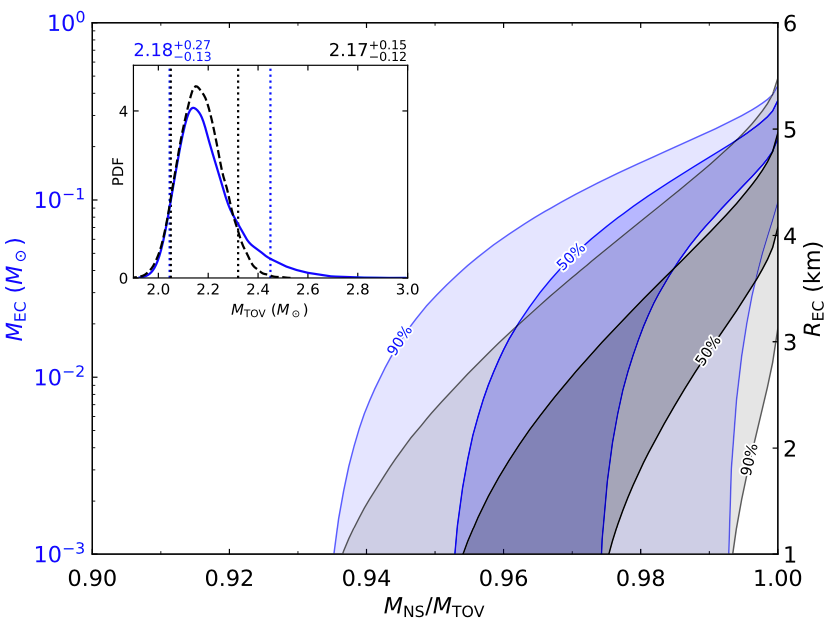Massive Neutron Star Has a Strange Heart
The team analyzed data on neutron star mass and radius, gravitational waves from binary neutron star mergers, and theoretical constraints from quantum chromodynamics calculations. Using a newly developed statistical method, they studied the structure of the dense matter equation of state in detail.
The team found that a peak structure in the sound speed of the equation of state commonly appears in the posterior, located at a density lower than the center density of the most massive neutron star. Such non-monotonic behavior suggests that the state deviates from pure hadronic matter. Additionally, they found support for the existence of an exotic core in neutron stars heavier than 0.98 times the most massive one, based on a posterior that satisfies both observational and theoretical constraints. Quantitative analysis revealed that the state at the center of the most massive neutron star is softer than typical hadronic matter (even with hyperons), and a sizable exotic core (>1km) is plausible (see Fig.1).
This work has been published in Science Bulletin under the title "Plausible presence of new state in neutron stars with masses above 0.98M_TOV."

Fig.1 Mass (MEC) and radius (REC) of the exotic core versus the neutron star mass divided by MTOV, the maximum gravitational mass of the non-rotating neutron stars. For the neutron stars lighter than 0.92 MTOV, a sizable exotic core (strange heart) is unlikely. While for the neutron stars more massive than 0.98 MTOV, a strange heart is plausible. (Image by HAN Mingzhe et al, 2023 Sci. Bull.)